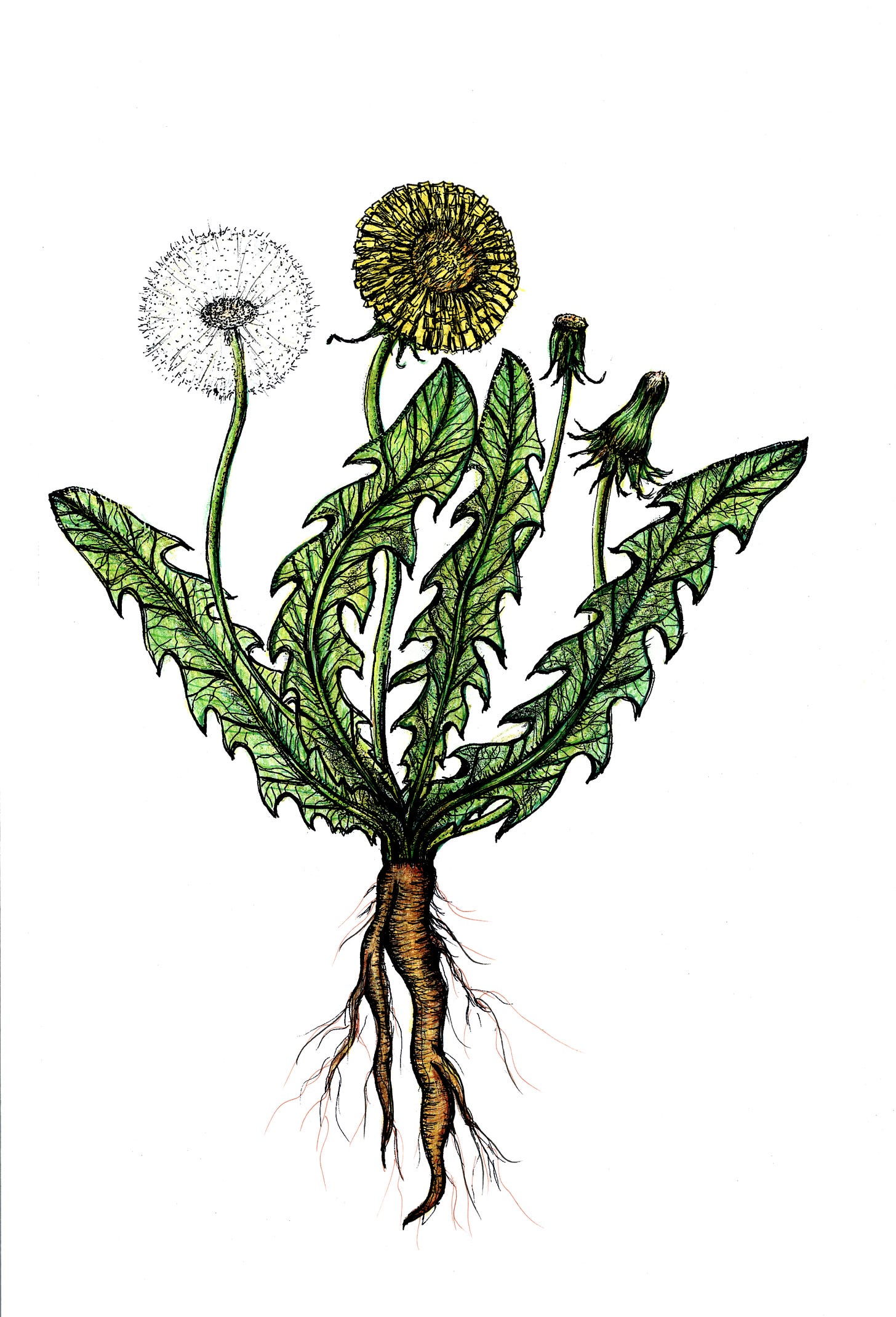It's spring in the Northern hemisphere. A time to harvest roots, plant seeds, and renew relationship with the land under our feet. It is an opportunity to learn about the ecosystems that support us and maybe even rewire our perception of so-called weeds.
Let’s take a look at one of my favorites: Dandelion. A misunderstood fighter whose medicine breaks through cracks in pavement and relentlessly returns to carpet-like lawns despite being sprayed. Sacred medicine to some and invasive species to others, these ubiquitous healers are the epitome of wild nature.

Strong and relentless, dandelion always comes back to bloom every spring, unphased by unpopularity or contemporary categorization as a weed to bring light to lawns, sidewalks, and city streets. These so‑called weeds appear on lawns no matter how much toxic poison people douse them with. The plant’s taproot has work to do; it brings minerals from the subsoil to grasses and other plants that can’t reach deeply.
In our bodies, dandelion roots and flowers ignite digestion and activate the power in our solar plexus, while the jagged, bitter leaves — dent de lion, French for “tooth of the lion”— flush, clean, and clear the kidneys, the organ where we store life force energy. Beyond the bitterness in the leaves, you can taste the salty, mineral-rich properties responsible for cleansing and clearing our internal waterways.
As a liver cleanser, dandelion root helps move anger and frustration out of the body while feeding and supporting beneficial bacteria. In healing traditions like Ayurveda, our center — our digestive system and inner fire — is where our seat of confidence lies. This center, our solar plexus, is perceived as being yellow, illuminated like the sun, and dandelion’s beautiful flowers. For those who deplete themselves trying to people please, dandelion is an excellent ally.

Sadly, most so‑called weeds are killed out of habit — and at great cost — turning yards and valuable public parks into semi-toxic playgrounds. Glyphosate is sprayed hundreds of times a year onto public green spaces to treat plants that could otherwise be free food and medicine, and that would attract beneficial insects, bring up minerals from the subsoil, and sow fertility. While chemical companies run television and internet ad campaigns claiming the safety of their weed-killing products, it is not hard to do a bit of research and learn that this is a lie. Nature is generous and abundant as long as we stop making her (and ourselves) sick.
This spring, I encourage you to look at dandelions and other wildflowers around you as though for the first time. We can all, in our own ways, be voices for the plants and land that we depend upon to breathe, eat, heal, and thrive. And beyond that, we can be positive remediating forces. Grassroots movements begin from the ground up and weeds can teach us a lot about resistance. They cluster together, grow everywhere, adapt to change, and never give up.
You’re invited to learn more about our green neighbors at an online plant walk. These are free for paid subscribers.
Hope to see you there. 🌱



